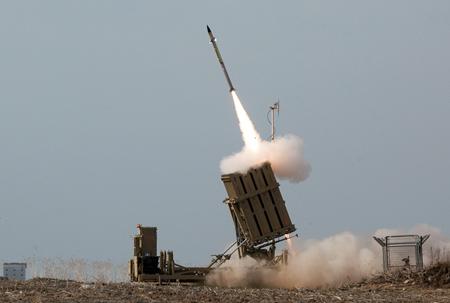Military doctrine is rooted in the principle of deterrence, but in the specific case of Israel, the concept also extends to offense.
The Tel Aviv government has considered the two-way nature of these elements to be strategic, as they complement each other and tend towards the security of the country, located in a geographic area hostile to their own interests. Another advantage is the demographic recovery compared to neighboring states.
The armed clashes with state actors have, over time, forced Israel to implement its defense models and weapon systems. This need has been reinforced with the emergence of new threats perpetrated by non-state actors and with the emergence of asymmetric war on terrorism.
The Israeli safety net is centered on the denial of its airspace with the Patriot and Arrow missiles, and the latter are the first line of anti-missile defense against carriers that could potentially be launched from Syria or Iran. In the short term, David's Sling will be brought into line in contrast to long and medium-range rockets, cruise ships and even ballistic missiles.
The Israeli territory is the object of short and medium-range missile attacks, supplied to the Palestinian armed groups attested in Gaza and in southern Lebanon. The defense system against this threat is entrusted to the Iron Dome, designed by Rayteon and developed by Rafael Advanced Defense System, a company with over 6.500 employees and a turnover of 2 billion dollars a year.
It consists of three elements: a radar that detects and monitors the rocket launch, a computer that calculates the trajectory and the impact point and three missile launchers. Each of these is equipped with twenty Tamir interceptor missiles, which are launched in pairs to prevent errors or malfunctions. The initial launch phase is controlled by the central radar, but an autonomous driving system is activated near the target. The Tamirs, worth 40.000 dollars each, cover an area equal to 150 km / q.
The cost of Iron Dome is estimated at around 50 million dollars. The weapon system has a radius of action between the 4 and the 75 kilometers, and an operational capacity suitable for all weather conditions.
The computer that controls and manages all phases of the interception is able to assess whether the hostile missile can hit sensitive targets, or if the point of impact is in unpopulated areas. In the second case, the Tamir batteries are not activated, in fact the reaction times to the threat are extremely fast: between 15 and 40 seconds.
Currently there are 4 main batteries in operation, in total they have 5, and are located in Ashkelon, Sderot, Beersheba and Tel Aviv. The success rate of interceptions stands at 90%, a value that makes the Iron Dome a valid option for deterring attacks from anti-Zionist factions.
Giovanni Caprara
(photo: Nehemia Gershuni-Aylho.)












